Tag archives: astronomy
New cosmic messengers, and what they can tell us
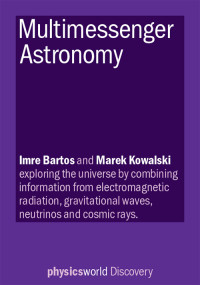 By Margaret Harris
By Margaret Harris
Immediately after last year’s announcement that the Laser Interferometer Gravitational-Wave Observatory (LIGO) had seen its first gravitational waves, a lot of the discussion centred on what the discovery meant for general relativity. This was understandable: getting further confirmation of Einstein’s century-old theory was (and is) a big deal. But in the longer term, and as the LIGO detectors notch up a few more observations (they’re currently crunching data on six new candidates), the emphasis will shift away from the waves themselves, and towards what they can tell us about the universe.
The key thing to realize here is that gravitational waves are fundamentally different from other, better-studied cosmic “messengers” that travel to Earth from distant reaches of the universe. Unlike photons, gravitational waves are not impeded by clouds of gas or dust; unlike cosmic rays, they are not deflected by electromagnetic fields. In addition, some of the most dramatic astrophysical events, such as the merger of two black holes in empty space, are “dark” or “silent” to other messengers: these events produce gravitational waves in copious quantities, but not, as far as we know, anything else.
View all posts by this author | View this author's profile
Chinese astronomers pin their hopes on LOT
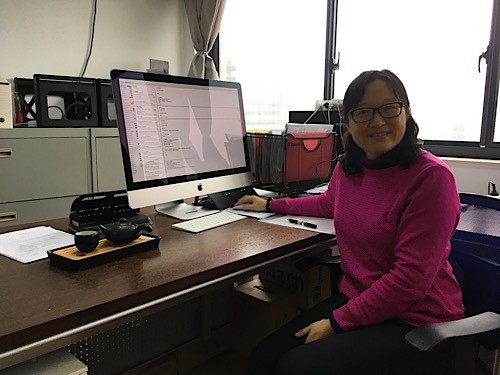
Lei Hao from the Shanghai Astonomical Observatory.
By Michael Banks in Shanghai, China
It was a cold, rainy day here in Shanghai, so coming from the UK, I felt right at home.
Jumping into a Shanghai taxi to avoid the downpour, I headed to the Shanghai Astronomical Observatory, belonging to the Chinese Academy of Sciences, to meet astronomer Lei Hao.
View all posts by this author | View this author's profile
The Science of Heaven
By Richard de Grijs in Beijing
Good things come to those who wait. Indeed, it has been almost six years since we initially thought about making an astronomy documentary set in China – and we finally showed it in public last month. The Science of Heaven premiered on 30 November 2016 at my institution, the Kavli Institute for Astronomy and Astrophysics at Peking University. By all accounts, it was very well received. While we are ironing out some final issues before releasing it publicly in early 2017, you can watch the trailer (above).
View all posts by this author | View this author's profile
Freeman Dyson on the physics dream team, Tycho Brahe’s heavy metal, Tintin bags an astronomical sum
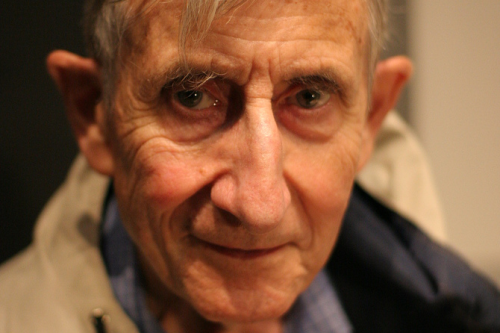
Mr Freeman Dyson: “so lucky” not to have a PhD. (CC BY-SA 2.0/Jacob Appelbaum)
By Hamish Johnston
What would it be like to have known Hans Bethe, Wolfgang Pauli, Robert Oppenheimer and Richard Feynman? One person who can tell is the theoretical physicist Freeman Dyson, who recounts his extraordinary life in an interview in Nautilus entitled “My life with the physics dream team”. Born in the UK, he got a degree in mathematics at the University of Cambridge before embarking on a PhD with Bethe at Cornell. Remarkably, Dyson did not complete his doctorate – something he seems rather pleased with: “I was so lucky. I slipped through the cracks.”
View all posts by this author | View this author's profile
To the stars, through adversity
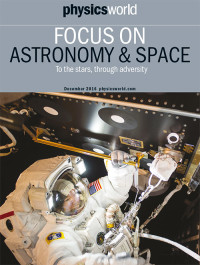 By Margaret Harris
By Margaret Harris
Space is, famously, “the final frontier”. It is also – almost as famously – “hard”. We saw this most recently in October, when the Schiaparelli lander crashed onto the surface of Mars, but throughout humanity’s nearly 60-year history as a spacefaring species, our hopes of exploring and observing the cosmos have repeatedly come up against the stiff challenge of building vessels that can survive the journey. Arguably, no other industry on Earth (or indeed off it) has rejoiced in such high “highs”, or agonized through such low “lows”.
That mix of heady dreams and harsh realities is one reason why the latest Physics World focus issue on astronomy and space science carries the tag line “To the stars, through adversity” (I’ll come to the other reason at the end of this blog post). The articles in the issue – which you can read free of charge – pay tribute to the ingenuity of the scientists and engineers involved in the challenging and rewarding practical work of exploring and observing the cosmos. Here, you can learn about the latest advances in astronomical instrumentation, get up to speed with future space missions, and familiarize yourself with recent developments in the entrepreneurial “new space” industry.
View all posts by this author | View this author's profile
Award-winning ‘Bailys Beads’, schoolyard accelerators , pulsar poems and more
By Tushna Commissariat
Its officially that time of the year again when we can marvel at this year’s winners of the Insight Astronomy Photographer of the Year 2016. The awards ceremony, held at the Royal Greenwich Observatory, has unveiled some truly spectacular and ethereal shots of our universe. The overall winner this year is a truly amazing composite image of the 2016 total solar eclipse that shows the ‘Baily’s Beads’ phenomenon and was taken by photographer Yu Jun in Luwuk, Indonesia. In the video above, the judges explain why this particular image was the main winner for the year.
View all posts by this author | View this author's profile
The September 2016 issue of Physics World is now out
By Matin Durrani
The cover story in the September 2016 issue of Physics World magazine – now live in the Physics World app for mobile and desktop – reveals the fascinating new field of “crowd breath research”, which can even shed light on how cinema audiences react during the changing scenes in a movie. You can read the article here on physicsworld.com too.
The September issue also shows how to do crystallography without crystals, explains how first data from the Gaia spacecraft could revolutionize astronomy (see the above video for more on that), and contains one physics teacher’s fascinating story about what she did to change her school’s gender balance.
Don’t miss either reader feedback on the potential impact of Britain leaving the EU on physics or Robert P Crease’s Critical Point column on why science denial is one of the most important issues in the US presidential campaign.
View all posts by this author | View this author's profile
Secrets of the solar system: the July 2016 issue of Physics World is now out
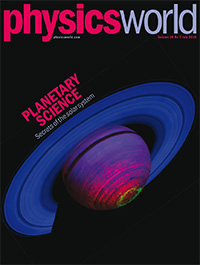 By Matin Durrani
By Matin Durrani
Members of NASA’s Juno mission are bracing themselves for the final moments of the craft’s five-year-long journey to Jupiter, which will finally reach its quarry just a few days from now (late on 4 July in North America, early morning on 5 July in Europe). There’ll be an anxious, 40-minute period of radio silence as the spinning craft fires its thrusters and slows down enough to be captured by the gas giant’s gravity.
During that time, staff at NASA’s Jet Propulsion Laboratory will be waiting, nervously, for Juno’s instruments to flicker back on and allow data-taking to begin as the craft starts a year-long orbit of the planet.
For the inside story of Juno and what it hopes to achieve, don’t miss the July 2016 special issue of Physics World magazine – now live in the Physics World app for mobile and desktop. You can also read the article here.
Devoted to planetary science, the special issue includes amazing images from NASA’s New Horizons mission to Pluto, an investigation into auroras on planets other than Earth, and an analysis of what we know about Vesta and Ceres – the two largest bodies in the main asteroid belt.
Rosetta and bedbugs, LIGO and dark matter, arXiving science and more…
By Tushna Commissariat
Space missions and insects are not the most usual of bedfellows. But in a wonderful example of how space technology can be translated into practical devices for use here on Earth, a UK company has repurposed and adapted an analyser used onboard the Rosetta mission – that in 2014 landed a probe on a comet for the first time – to sniff out bedbugs. The pest-control company, Insect Research Systems, has created a 3D-printed detector that picks up bodily gas emissions from bedbugs – such a device could be of particular use in the hotel industry, for example, where many rooms need to be quickly scanned. The device is based on the Ptolemy analyser on the Philae lander, which was designed to use mass spectroscopy to study the comet’s surface.
“Thanks to the latest 3D-printing capabilities, excellent design input and technical support available at the Campus Technology Hub, we have been able to optimize the design of our prototype and now have a product that we can demonstrate to future investors,” says Taff Morgan, Insect Research Systems chief technical officer, who was one of the main scientists on Ptolemy. In the TEDx video above, he talks about the many technological spin-offs that came from Ptolemy – skip ahead to 13:45 if you only want to hear about the bedbugs, though.
HAWC spots TeV gamma ray flare
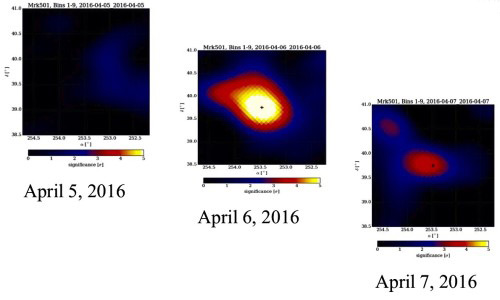
Now you see it, now you don’t: a TeV gamma-ray flare spotted by HAWC. (Courtesy: Michelle Hui)
By Hamish Johnston at the APS April Meeting in Salt Lake City
Talk about luck. Just 10 days before the April Meeting the High-Altitude Water Cherenkov (HAWC) gamma-ray observatory lit up with the detection of a galaxy that produced large numbers of teraelectronvolt (TeV) gamma rays for just one day (see image).
Dubbed Markarian 501, HAWC astrophysicists believe that the flare could be driven by a supermassive black hole at the centre of the galaxy. However, they admit that they don’t really understand how such flares occur.
View all posts by this author | View this author's profile